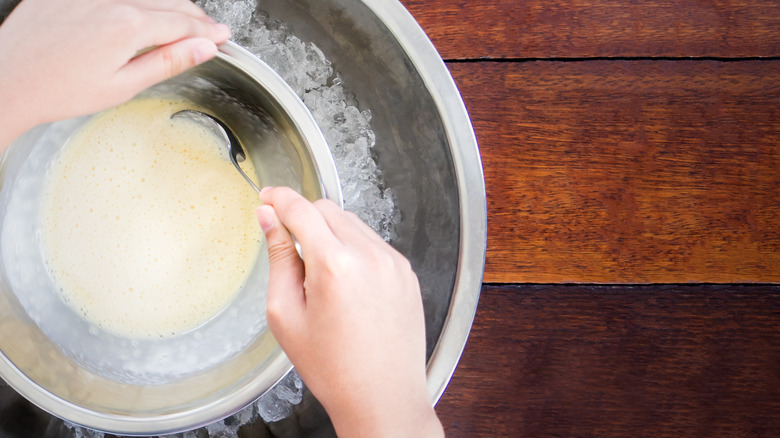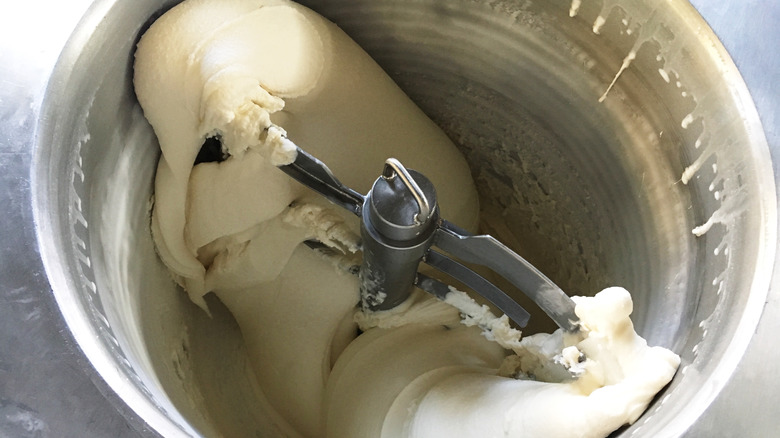Why You Need To Let The Base Rest For Homemade Ice Cream
Ice cream — that frozen treat that everyone seems to love — is delicious in each and every one of its varied forms, whether that's a simple scoop of vanilla or a more complex creation such as a hot fudge sundae or ice cream cake. And while the commercial ice cream found at your local supermarket or scoop shop seems to be more high quality than ever before, there's just something thrilling about making the dessert at home.
If you have a home ice cream maker, you've no doubt delighted in churning flavors as varied as peppermint, eggnog, and plain ol' chocolate. And when creating these indulgences, you've no doubt noticed a step most of these recipes have in common — chilling the ice cream base overnight before you can spin it into rich, creamy ice cream (talk about delayed gratification). If you've wondered if this step is necessary, here's why experts say letting ice cream base rest overnight is a good idea.
Rested ice cream base may result in a smoother, more stable dessert
Many aspects of cooking require patience, from resting pie dough overnight before you can bake up a winning pie to letting hot meat rest for a few minutes before slicing into it (via Nigella). Lots of different preparations have to rest either before or after cooking in order to create a winning finished dish. In the case of homemade ice cream, many recipes call for letting the base — typically a custard made from milk and/or cream, egg yolks, sugar, and flavorings — rest in the refrigerator for at least four hours or overnight before pouring it into the ice cream maker and churning it, per The New York Times.
This step can be difficult to stomach if you just want to dig your spoon into some ice cream, ASAP, but a Taste of Home culinary assistant tells the outlet that letting the base rest produces a better texture in the finished ice cream. "Give your ice cream base time to rest," she says. "A night in the fridge will improve the texture and quality of the final mix." The prevailing wisdom about resting an ice cream base usually goes along those lines, with claims that a super-cold base, which also thickens slightly in the fridge, will churn up creamier in the machine (via Serious Eats).
Aging ice cream base might be optional
Serious Eats put this ice cream-making adage to the test, asking tasters to rank unaged ice cream base vanilla ice cream against ice creams using bases aged for, respectively, one, two, and three days. In terms of vanilla flavor and creamy texture, tasters found little to no difference between the various versions, leading the site to recommend simply chilling down the ice cream base in an ice bath until the base drops below 40 degrees Fahrenheit, then going right ahead with your ice cream recipe.
Still, when Serious Eats surveyed various pastry chefs including the site's own Stella Parks, the chefs insisted that chilling the base overnight produces superior ice cream in their own kitchens. Some noted that a chilled ice cream base seems to produce at least one extra scoop of churned ice cream — and, therefore, is fluffier and holds air better — while others cited a stronger intensity of the flavors that are left to steep overnight in the base, such as toasted coconut. When it comes to letting ice cream base rest overnight, it seems the jury's out — but there's certainly no harm in doing so if you've got the time and patience.


